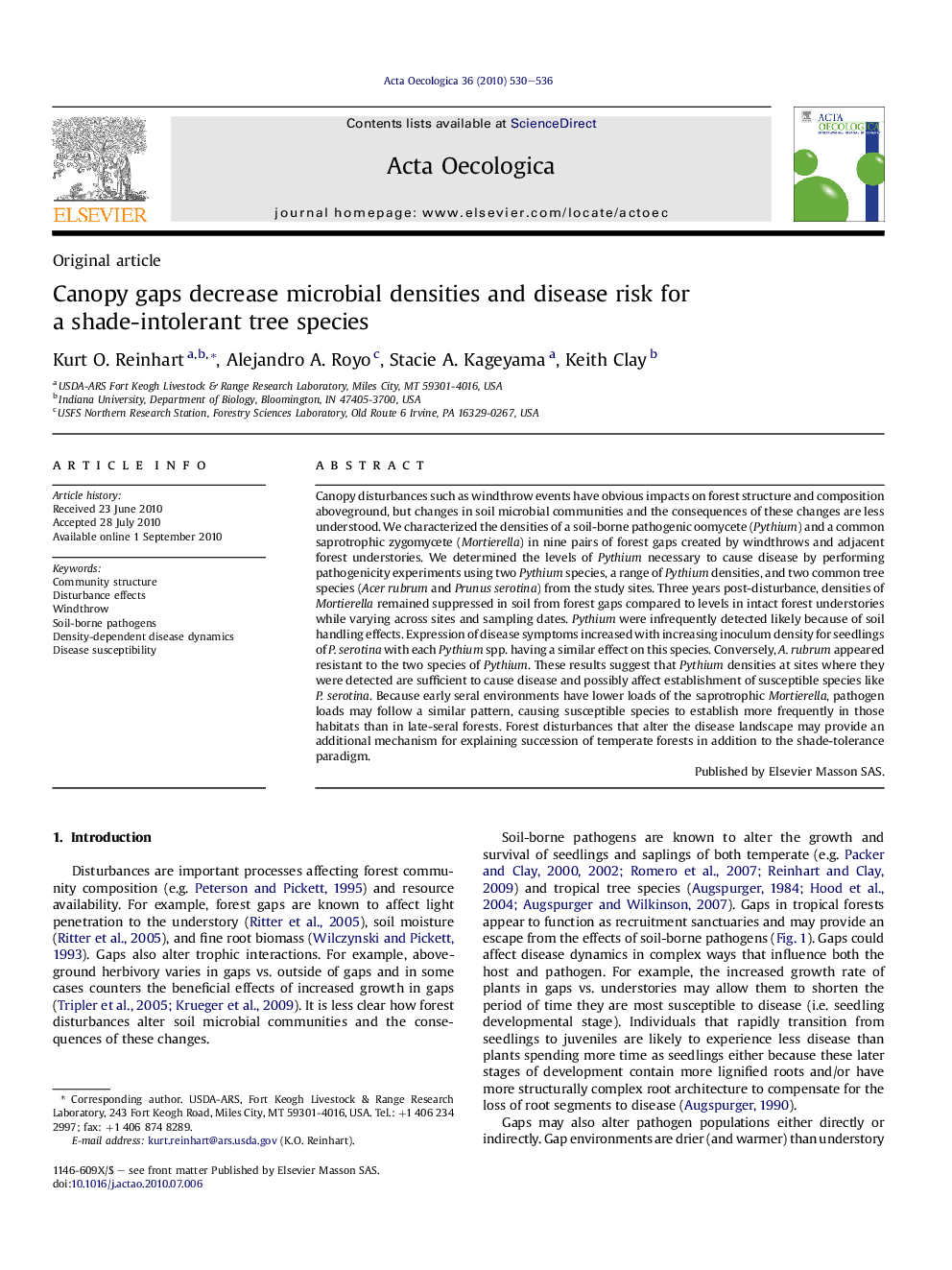| کد مقاله | کد نشریه | سال انتشار | مقاله انگلیسی | نسخه تمام متن |
|---|---|---|---|---|
| 4380955 | 1304042 | 2010 | 7 صفحه PDF | دانلود رایگان |

Canopy disturbances such as windthrow events have obvious impacts on forest structure and composition aboveground, but changes in soil microbial communities and the consequences of these changes are less understood. We characterized the densities of a soil-borne pathogenic oomycete (Pythium) and a common saprotrophic zygomycete (Mortierella) in nine pairs of forest gaps created by windthrows and adjacent forest understories. We determined the levels of Pythium necessary to cause disease by performing pathogenicity experiments using two Pythium species, a range of Pythium densities, and two common tree species (Acer rubrum and Prunus serotina) from the study sites. Three years post-disturbance, densities of Mortierella remained suppressed in soil from forest gaps compared to levels in intact forest understories while varying across sites and sampling dates. Pythium were infrequently detected likely because of soil handling effects. Expression of disease symptoms increased with increasing inoculum density for seedlings of P. serotina with each Pythium spp. having a similar effect on this species. Conversely, A. rubrum appeared resistant to the two species of Pythium. These results suggest that Pythium densities at sites where they were detected are sufficient to cause disease and possibly affect establishment of susceptible species like P. serotina. Because early seral environments have lower loads of the saprotrophic Mortierella, pathogen loads may follow a similar pattern, causing susceptible species to establish more frequently in those habitats than in late-seral forests. Forest disturbances that alter the disease landscape may provide an additional mechanism for explaining succession of temperate forests in addition to the shade-tolerance paradigm.
Journal: Acta Oecologica - Volume 36, Issue 6, November–December 2010, Pages 530–536